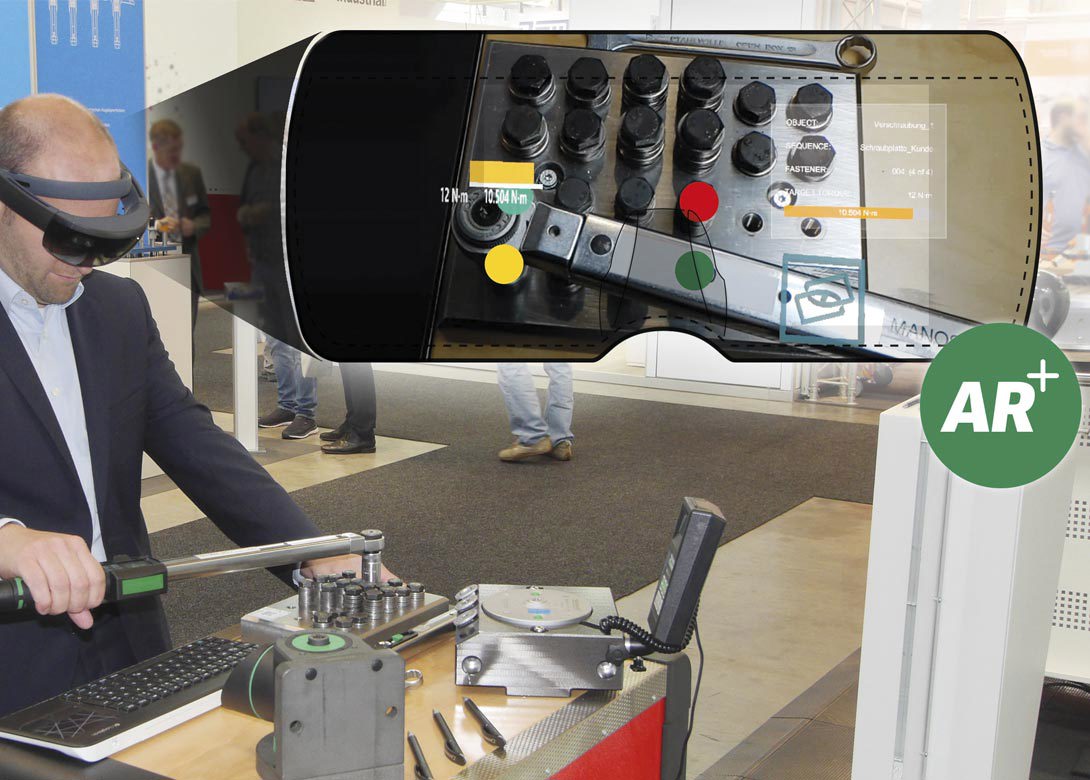
STAHLWILLE Eduard Wille GmbH & Co KG, the German torque tool and handtools specialist, is introducing computerisation to handtool technology.
Together with oculavis GmbH, a firm based in Aachen, Gerany, the enterprise has developed a prototype of a smart visor that will safely guide an end user through a wide range of different joints. The system is capable of reducing the learning phase to a minimum and accelerating the fastener tightening process. At the same time, it ensures a much improved safety level in the case of safety critical fasteners.
Many years ago, STAHLWILLE started work on using smart glasses to execute bolt tightening processes in assembly work, while simultaneously monitoring quality. Now that the patent has been issued, work can begin in earnest on developing the application. The system premiered at EMO Hannover – the metalworking trade fair, where STAHLWILLE and oculavis presented a prototype use of the application.
The visor and torque wrench use a wireless interface to communicate with the customer’s production planning and control system. In the visor, the assembly worker sees the complete tightening sequence and the position of the next fastener to be tightened with any additional information required. At the same time, the radio linked torque wrench from STAHLWILLE is automatically set for the current fastener type. After the worker has completed the task, the fastener tightening action is evaluated and documented.
A system of this kind really comes into its own in the case of safety critical fastener tightening and complex tightening sequences – such as those encountered in the automotive and aerospace industries. Here it is absolutely essential to adhere strictly to the prescribed assembly sequence and to tighten the fastener to exactly the required tightening parameters.
In addition, these smart glasses enable induction time to be reduced and work processes to be accelerated because the worker is provided with exactly the right information as needed even if he or she has no direct experience with the fastener in question.
To enable the AR visor to guide the user through the tightening sequence, it is first necessary to program all the required joints and fastener types in a model that displays not only the location of each fastener in a three-dimensional workspace but also the tightening parameters. Once the system has been correctly set up, the worker can use the AR visor freely to work through the tightening sequence as programmed.
In presenting this development, STAHLWILLE has shown how state of the art torque technology can be integrated in tomorrow’s production environments with the aid of an AR visor and, at the same time, boost efficiency and enhance safety. The company is in the process of developing the system further. It should one day be possible for a worker to set up the tightening sequences using a physical master workpiece, store the fastener positions using the smart glasses and define the tightening parameters, so that the data is available instantly when work has to be carried out later on an identical workpiece.

Will joined Fastener + Fixing Magazine in 2007 and over the last 15 years has experienced every facet of the fastener sector - interviewing key figures within the industry and visiting leading companies and exhibitions around the globe.
Will manages the content strategy across all platforms and is the guardian for the high editorial standards that the Magazine is renowned.
Don't have an account? Sign Up
Signing up to Fastener + Fixing Magazine enables you to manage your account details.